pH Measurement & Liquid Analysis
Liquid Analysis solutions with industry leading technologies
Liquid Analysers for all applications
Endress+Hauser analytical measuring systems are available for all common parameters and can be found anywhere customers require reliable measured values, high availability and long operating times. Applications include ensuring product quality, environmental protection, safety applications, process optimisation, and more.
The range includes standard sensors up to complex, comprehensive measuring stations.
Our Diverse Liquid Analysis Portfolio
- Conductivity sensors and transmitters – suitable for product monitoring, process control, leakage detection, and phase interface.
- pH sensors and transmitters – highly precise pH measurement solutions suitable for a range of applications such as hazardous areas, hygienic applications, stable processes, and more.
- ORP sensors and transmitters – disinfection applications, aeration control, and detoxification applications.
- Turbidity sensors and transmitters – for applications such as sludge concentration measurement, effluent monitoring, the production of drinking water, and in the dairy industry for loss detection.
- Oxygen sensors and transmitters – suitable for all types of oxygen levels from trace amounts to high concentrations as well as for specific applications such as hygienic processes or in hazardous locations.
- Chlorine sensors and transmitters – to measure chlorine, chlorine dioxide, and total chlorine for everything from pool water to the control and monitoring of drinking water disinfection.
- Sludge level sensors and transmitters – ideal for sedimentation tanks and similar locations. Manufactured specifically to pump sludge rather than water.
- Analysers for iron, chromate, aluminium, sodium, and hardness – manufactured specifically for drinking water, mineral water, process water, and wastewater treatment applications.
- Process photometers – products for all industries that require NIR/VIS absorption and UV absorption measurement.
- TOC, COD, and SAC analysers – for applications in the wastewater industry.
- Nutrient analysers and sensors – ammonium, phosphate, total phosphorus, and nitrate analysis.
- Automatic water samplers – suitable for surface water, stormwater, wastewater, water sampling, and more.
pH & ORP
High-quality measurement for all industries
More than 30% of all quality-relevant measurements in processes are pH measurements. Reliable pH sensors are extremely important for plant optimisation and process safety. ORP sensors provide trend information on the disinfection ability in drinking water or swimming pools, aeration control in wastewater treatment plants. We offer an extensive portfolio of sensors to suit any application in all industries. Whether for mining flotation or leaching, to food and beverage plants requiring non-glass sensors, contact our team to find out more information.
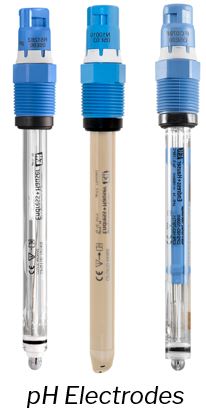 pH measuring principle:
pH measuring principle:
The pH value is used as a unit of measurement for the acidity or alkalinity of a liquid. The pH-sensitive element of glass electrodes is a glass bulb that supplies an electrochemical potential which is dependent upon the pH value of the medium. This potential is generated because small H+ ions penetrate through the outer layer of the membrane while the larger negatively charged ions remain in the solution. Glass pH probes contain an integrated Ag/AgCl reference system that serves as the required reference electrode. The pH value is calculated from the potential difference between the reference system and the measuring system using the Nernst equation. Digital pH sensors achieve an outstanding linear measurement performance over an extremely wide pH range.
ORP measuring principle:
The redox potential is a unit of measurement for the activity of electrons in aqueous medium. A precious metal electrode (Silver, Gold or Platinum) acts as the measuring element where the active electrons attach. The potential measured at this electrode depends on the number of active electrons in the medium. ORP probes contain an integrated silver/silver chloride (Ag/AgCl) reference system that serves as the required reference electrode with a constant potential. The ORP value is calculated from the potential difference between the reference and the measuring system using the Nernst equation. It is indicated in mV
Benefits: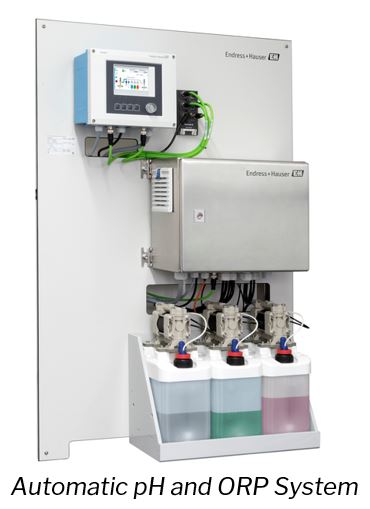
- Wide range of sensors with dirt-repellent junctions and materials
- Pre-calibrated sensors with plug-and-play memosens technology
- Wide range of installation accessories from flow through, to immersion and retractable
- Precision buffers available to enable accurate calibration standards
- In-situ sensor cleaning accessories available
For additional information please feel free to contact our team directly.
Conductivity
High precision measurement for all industries
In many applications conductivity is crucial for process control., product monitoring, water monitoring or leakage detection. We provide reliable and accurate instruments for all measurement ranges and conditions, such as ultrapure water, CIP cycles, hazardous areas, high temperatures, or hygienic processes. The selection of the right sensor depends on the application and the conductivity range. To measure low conductivities in pure and ultrapure water, conductive type sensors are best. For process medium with high conductivity like milk, beers, acids, brine, phase separation, a 4-electrode with a wide measuring range is
suited.
Conductivity with conductive sensors, measuring principle
Conductive sensors feature two electrodes that are positioned opposite of each other. An alternating voltage is applied to the electrodes which generate a current in the medium. The intensity of the current depends on the number of the medium’s free anions and cations that move between the two electrodes. The more free anions and cations the liquid contains, the higher the electrical conductivity and the current flow.
Conductivity with 4-electrode sensors, measuring principle
A high ion concentration in the medium leads to a mutual repulsion of the ions and thus a reduction of the current – this is the polarisation effect. This can influence the measuring accuracy of the conductive probes. 4-electrode sensors have two electrodes that are currentless and therefore not affected by the polarisation effect. The measured potential difference in the medium along with current is used to calculate the conductivity value.
Benefits:
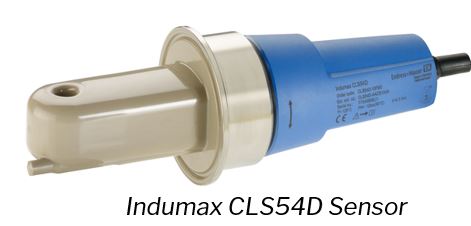
- Wide range of sensors for all applications and measuring ranges
- Compact devices (integrated transmitter) perfectly suited to the Food & Beverage industry.
- Wide range of installation accessories from flow through, to immersion and
retractable - Factory calibrated cell constants with plug-and-play installation
For additional information please feel free to contact our team directly.
Oxygen
High accuracy measurement for all industries
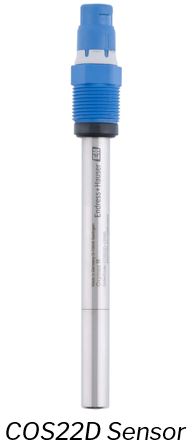 The measurement of dissolved oxygen is essential for quality assurance and process control in applications such as aeration control and fermentation. With high quality sensors available in a wide range of materials and measurement ranges from oxygen traces to high oxygen concentrations. Suitable for hazardous areas, and hygienic applications and robust enough for mining processing plants, contact us to discuss the available range of dissolved oxygen sensors.
The measurement of dissolved oxygen is essential for quality assurance and process control in applications such as aeration control and fermentation. With high quality sensors available in a wide range of materials and measurement ranges from oxygen traces to high oxygen concentrations. Suitable for hazardous areas, and hygienic applications and robust enough for mining processing plants, contact us to discuss the available range of dissolved oxygen sensors.
Optical Dissolved Oxygen measuring principle:
Optical oxygen sensors use the fluorescence quenching method and feature an LED, a photodiode and a separating section to the medium that is covered by an oxygen-permeable layer. The layer contains marker molecules that are excited by an orange light and respond with a dark red fluorescence light. Oxygen molecules attached to the marker molecules and attenuate (quench) the fluorescence light. The photodiode then detects the light intensity which reflects the oxygen partial pressure in the medium
Amperometric Dissolved Oxygen measuring principle:
Amperometric oxygen sensors comprise of a working electrode and a counter electrode. They are surrounded by an electrolytic liquid in a common chamber and a direct voltage is applied to both. Oxygen permeates from the medium into the electrolyte through a membrane and is converted to a current at the working electrode. The counter electrode keeps the system running by means of a chemical equivalence reaction. The resulting current is proportional to the oxygen partial pressure in the medium
Benefits:

- Wide range of sensors, wetted materials and measuring ranges
- Wide range of installation accessories from flow through, to immersion and
retractable - Oxygen calibration standards for adjustment, calibration, and verification of sensors
- In-situ sensor cleaning accessories available
For additional information please feel free to contact our team directly.
Turbidity
Reliable turbidity, total solids and suspended solids measurement in all industries
Turbidity measurement is essential for quality assurance and process control in a wide variety of applications such as drinking water, effluent monitoring and sludge concentration measurement in wastewater treatment plants, monitoring of seawater inlets or production loss detection in dairies. Contact us to see how sensors for total and suspended solids, turbidity sensors can support your application.
Total Solids and Suspended Solids measuring principle:
Total solids or suspended solids sensors use the backscattered light method. They feature an LED lamp and two light detectors positioned in 90 and 135-degree angles. Solid particles in the medium cause the incident light emitted by the lamp to scatter. The turbidity or solids content of the medium is calculated from the amount of the scattered light received by the detectors. A transmitter displays the final total or suspended solids value in the desired unit such as g/l or %TS.
Turbidity measurement with Absorption Sensors measuring principle:
Absorption turbidity sensors measure the light absorbance of particles in a medium. They feature an LED lamp and a light detector that is positioned directly opposite the lamp. Between them, particles in the medium attenuate the emitted light, which is converted by the detector first into an electric signal and then into the final turbidity value. Advanced sensors feature a second lamp-detector arrangement using a different path length, thus improving the reliability of the measurement.
Benefits:

- Wide range of sensors, wetted materials and measuring ranges
- Wide range of installation accessories from flow through, to immersion and
retractable - Smart solid-state references for adjustment, calibration, and verification of sensors
- In-situ sensor cleaning accessories available
For additional information please feel free to contact our team directly.
Chlorine
Reliable measurement of chlorine, total chlorine and chlorine dioxide
Free chlorine, chlorine dioxide or total chlorine are usually measured to monitor and control the disinfection of drinking water, reuse water or pool water. Chlorine sensors are therefore applied in waterworks, cooling towers, bottle cleaning facilities where they ensure a smooth water treatment compliant to legal limits. Contact us to discuss options for your water disinfection requirements.
Chlorine dioxide measuring principle
Sensors for chlorine dioxide measurement feature a metallic cathode, which is separated from the medium by a thin membrane. Chlorine dioxide coming from the medium diffuses through this membrane and is reduced at the gold cathode. The circuit is completed by means of a silver anode and the electrolyte. The electron reduction at the cathode is proportional to the concentration of chlorine dioxide in the medium. This process works in a wide pH and temperature range.
Free chlorine and total chlorine measuring principle
Measurement of free available chlorine is somewhat different. Here, the hypochlorous acid diffuses through the membrane and produces a reaction. The presence of hypochlorous acid in the medium depends on the pH value. This dependency is compensated by means of pH measurement in the flow assembly and balancing in the transmitter. For the measurement of total chlorine, hypochlorous acid and additionally chloramines play a role in a complex system of reactions
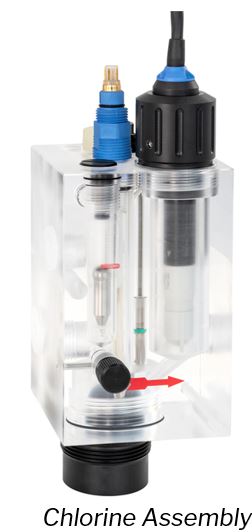
Benefits:
- Full sensor range for free chlorine, total chlorine, and chlorine dioxide measurement
- Designed for use in channels and basins as well as installation in flow assemblies
- Ready-to-run chlorine disinfection panels are available. Plug-and-play design with all accessories
For additional information please feel free to contact our team directly.
Sludge Bed Level
Reliable sludge bed level measurement in thickeners, clarifiers and sedimentation tanks
Sludge level sensors help to manage pumping of sludge, not water. The sensors continuously monitor the separation and transition zones of the clarification and settling phases, so that you can operate your process efficiently. Typical installations are thickeners, clarifiers and washers in mining processing plants, primary and secondary clarifiers at water treatment plants to measure the sludge level, bed level and sludge blanket level. Contact us to discuss your application further.
Sludge level with Ultrasonic sensors measuring principle:
Ultrasonic sludge level sensors feature a piezoelectric crystal that is encased in a resistant polymer housing. When the crystal is excited with voltage it generates a sonar signal. In the process, ultrasonic waves are emitted to scan the separation zones. The measured variable is the time the emitted ultrasonic signal needs to reach the solid particles in the separation zone and return to the sensor receiver. The principle is well-proven and ensures a long-time stable sludge level measurement
Benefits:
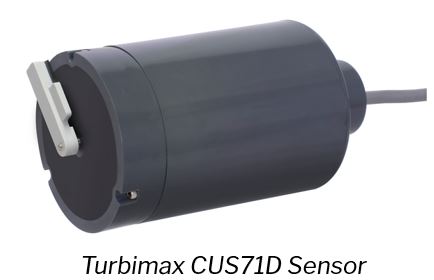
- Proven technology for stable and reliable measurement.
- Available with and without automatic sensor wiper for cleaning in process
- Simple commissioning thanks to predefined calculation models
- Complete range of mounting hardware available for any installation
For additional information please feel free to contact our team directly.
Automatic Water Samplers
Mobile and stationary sampling of water, wastewater, stormwater and surface water
There are many reasons for sampling of water or wastewater. Often it is a legal requirement, but it helps also to protect surface water, to monitor wastewater treatment processes, or to identify discharges into sewage systems. Automatic water samplers are smart, reliable
and a proven way of sampling.
A sampling of water and wastewater with automatic samplers is easy and absolutely reliable. Flexible sampling programs in the sampler allow taking time-controlled composite water samples, flow-controlled sampling, as well as event-triggered samples in the one device.
The collected samples are filled into individually assigned sample bottles.
The automatic sampler range is perfect for mobile water sampling, surface water sampling, river sampling, well sampling, and sewer system monitoring. Its built-in battery pack allows stand-alone operation even in remote areas.
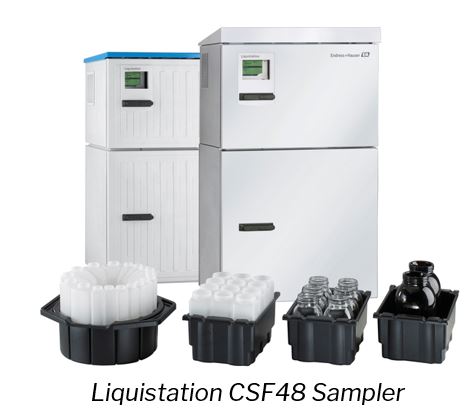
Benefits:
- Fail-safe cooling system and secure housing for the safety of collected samples
- Flexible sampling programs readily programmed
- Integrated transmitter can also connect pH, conductivity, oxygen, and turbidity
sensors
For additional information please feel free to contact our team directly.
Loop Powered Transmitters
Digital transmitter for liquid analysis
1-Channel, 2-wire, loop-powered transmitter for measuring pH/ORP, conductivity, or oxygen measurement in all process applications. The intuitive operating concept simplifies commissioning, handling, and maintenance saving you time every day. Easy switching of parameters and seamless system integration gives you the flexibility to adapt it exactly to your measuring task.
The 2-wire loop-powered transmitter is suitable for all applications in industries: Food & Beverage, Power & Energy, Water & Wastewater, Mining & Minerals Processing, Chemicals, and Oil & Gas
Benefits:
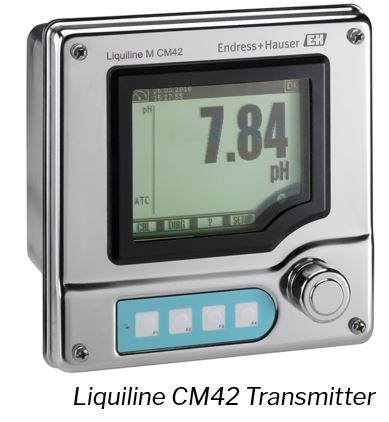
- 2-wire loop powered transmitter
- Plug and play sensor technology thanks to pre-calibrated Memosens sensors
- Compact and modular design
- Simple commissioning with quick set-up and navigator
- Predictive maintenance for detection when a sensor requires cleaning or calibration
For additional information please feel free to contact our team directly.
Multiparameter Transmitters
Digital transmitter for liquid analysis
The digital multiparameter transmitter for process monitoring and controlling in any liquid analysis application. The 1, 2, 4, 8-channel transmitter saves you time and money by offering seamless system integration, simple operation, and a reduced need for spare part stock. The modular transmitter provides you with all the benefits of a best-in-class transmitter platform from clever simplicity to maximum process safety.
The multiparameter transmitter is suitable for all applications in industries like Food & Beverage, Power & Energy, Water & Wastewater, Mining & Minerals Processing, Chemicals, and Oil & Gas
Benefits:
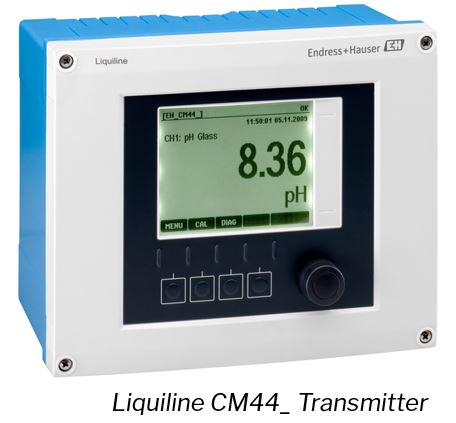
- One transmitter for all liquid analysis applications
- Up to eight (8) channels available
- Seamless integration communication standards to suit every DCS
- Integrated web server for access even via smartphone
- Status oriented maintenance and easy sensor verification with Heartbeat technology
For additional information please feel free to contact our team directly.
Water Analysis Panel
Modular panel solution for reliable and safe water monitoring in all industries
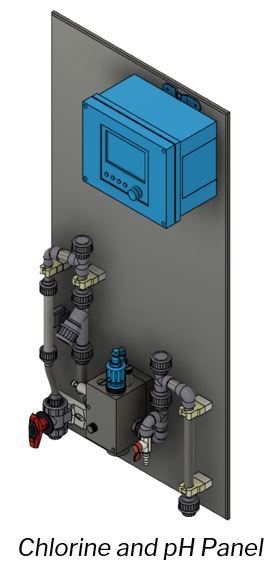
Water panels are the perfect solution wherever direct process installation of measuring instruments is difficult or not desired. They are equipped with digital Memosens technology providing all necessary measuring signals for process control and diagnostics. A variety of available sample preparations and parameters allow perfect customization to all of your processes. All panels are easy to install, to commission, and to operate and can be combined as desired thanks to their modular design.
Local Manufacture
Panels for several of the most common parameters are manufactured by EMC in our own workshop, allowing for ex-stock delivery of pH, Turbidity, and Chlorine panels. Locally customised panels on request.
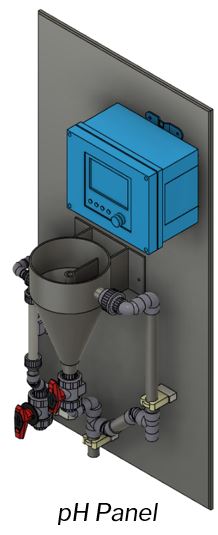
Benefits:
- Application specific, customized solution
- Reliable and safe operation according to relevant regulations eg DWS
- Space-saving arrangement
- Modular, scalable and easy to retrofit
- High plant availability, easy calibration and user-friendly maintenance thanks to Memosens technology
- One transmitter for all parameters possible with Liquiline multichannel controllers
Easy maintenance, short downtimes
Depending on your process, the sample current comes via the bypass of the pressure line or via a separate pump. Each measuring point has a direct connection to the sample current, which furthermore can be adapted separately for the respective parameters and disconnected for maintaining the sensors. This enables easy maintenance of the measuring systems on-site with only a short downtime of the measurements.
Minimized work time, maximum process safety
All panels can be equipped with Liquiline multiparameter controllers. These allow the use of pre-calibrated sensors with Memosens technology, remarkably minimizing work time inside your process. Better still, the well-thought-out operating concept ensures maximum user-friendliness and process safety.
Measure a wide range of parameters
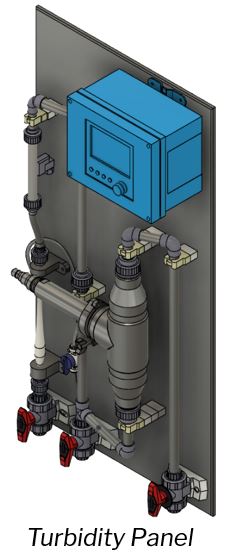
- pH/ORP
- Conductivity
- Dissolved oxygen
- Turbidity
- Chlorine
- Nitrate
- Sum parameters (BOD, COD, TOC, SAC)
- Color and photometric measurements
Other parameters are available upon request.
Field of application
Water analysis panels monitor a wide range of parameters in all industries and their utilities, for example in the following applications:
- Process water
- Water management – wastewater supervision
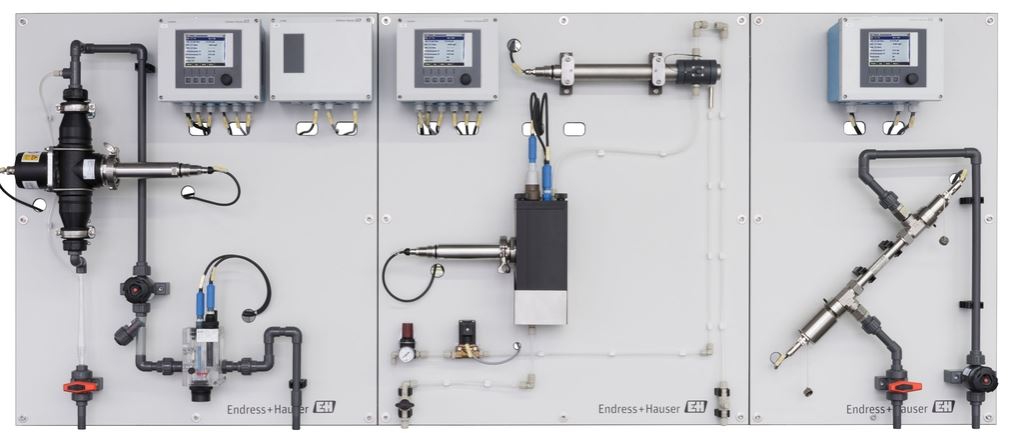
- Watershed monitoring
- Desalination
- Reverse osmosis monitoring
- Monitoring of chlorination and dechlorination
- Seep water monitoring (landfill)
- Surface water monitoring
- Beverage production
- Chemical pulp processing
For additional information please feel free to contact our team directly.
Contact Us
EMC Industrial Group Ltd
EMC Auckland Head Office
Phone +64 9 415 5110
56 Tarndale Grove, Rosedale
Auckland, 0632
PO Box 101444 North Shore Auckland, 0745
EMC Christchurch Office
For All Enquiries
Phone +64 9 415 5110
Email sales@emc.co.nz
China Representative
For Export Enquiries
Email modweigh@emc.co.nz

